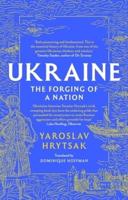Publisher's Synopsis
The following pages represent some of the results of four journeys into the interior of Peru and also many explorations into the labyrinth of early writings which treat of the Incas and their Land. Although my travels covered only a part of southern Peru, they took me into every variety of climate and forced me to camp at almost every altitude at which men have constructed houses or erected tents in the Western Hemisphere-from sea level up to 21,703 feet. It has been my lot to cross bleak Andean passes, where there are heavy snowfalls and low temperatures, as well as to wend my way through gigantic canyons into the dense jungles of the Amazon Basin, as hot and humid a region as exists anywhere in the world. The Incas lived in a land of violent contrasts. No deserts in the world have less vegetation than those of Sihuas and Majes; no luxuriant tropical valleys have more plant life than the jungles of Conservidayoc. In Inca Land one may pass from glaciers to tree ferns within a few hours. So also in the labyrinth of contemporary chronicles of the last of the Incas-no historians go more rapidly from fact to fancy, from accurate observation to grotesque imagination; no writers omit important details and give conflicting statements with greater frequency. The story of the Incas is still in a maze of doubt and contradiction. It was the mystery and romance of some of the Page viiiwonderful pictures of a nineteenth-century explorer that first led me into the relatively unknown region between the Apurimac and the Urubamba, sometimes called "the Cradle of the Incas." Although my photographs cannot compete with the imaginative pencil of such an artist, nevertheless, I hope that some of them may lead future travelers to penetrate still farther into the Land of the Incas and engage in the fascinating game of identifying elusive places mentioned in the chronicles. Some of my story has already been told in Harper's and the National Geographic, to whose editors acknowledgments are due for permission to use the material in its present form. A glance at the Bibliography will show that more than fifty articles and monographs have been published as a result of the Peruvian Expeditions of Yale University and the National Geographic Society. Other reports are still in course of preparation. My own observations are based partly on a study of these monographs and the writings of former travelers, partly on the maps and notes made by my companions, and partly on a study of our Peruvian photographs, a collection now numbering over eleven thousand negatives. Another source of information was the opportunity of frequent conferences with my fellow explorers. One of the great advantages of large expeditions is the bringing to bear on the same problem of minds which have received widely different training.










